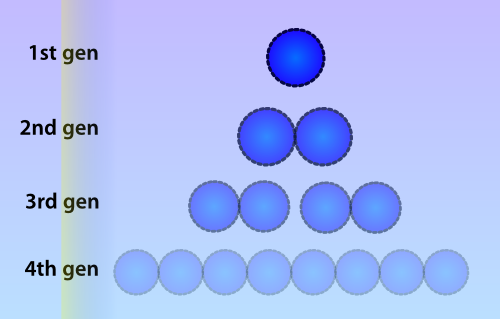Team:Amsterdam/project/applications/main applications
From 2012.igem.org




Facets and Applications
The Cellular Logbook regards quite unexplored and fundamental based research. Our projects holds a platform for new technology. But there are already some applications that are feasible in the near future.
Contents |
Facets
Combining all sensors: the Cellular Logbook
One of the more popular themes in iGEM projects is the creation of a biosensor for a specific product, and as such the iGEM part registry contains many sensors. Every year a lot of newly developed sensors are added. These sensors are very much needed in today’s world where many new threats and problems arise as unexpected dangers. However, most of these biosensors are fundamentally different in design, making it hard to have multiple sensors in one system. On top of that, many previous iGEM teams used fluorescence, pH or electrical conductance as a readout mechanism.
Our Cellular Logbook aims to create a single microorganism with the ability to sense a wide range of different signals and register them efficiently. The Cellular Logbook allows for the incorporation of many standardized sensors of the parts registry database in the same system using the biobrick assembly system. In addition it also provides a unique standardized sensing mechanism that can be used by any sensor that is compatible with the host cell.
Our system can be linked to any other sensory system introduced into a microorganism, therefore creating a multiple-sensor-microorganism. Since the registration of a signal occurs via methylation of a specific DNA sequence called Memory Part (MP), a specific signal can be stored effectively for either a short or a longer period of time, to eventually be read-out in an easy digestion providing a simple yes or no answer.
Time Indicator
Numerous identical plasmids are often present in single cells and plasmids replicate independently of the bacterial chromosome (Scott 1984). A plasmid copy number (PCN) has been determined for all plasmids in the Parts Registry, which indicates a likely amount of copies of the plasmid to be present in each cell. Unlike eukaryotes, prokaryotes do not copy DNA methylation patterns to the newly synthesized strand during DNA replication. This will lead to a dilution of the amount of ‘written’-plasmids over time, mostly due to cell replication and the ensuing binomial division of the plasmids in the parent cell among the two daughter cells.
The volatilty of this memory design seemed a downside at first, but quickly opened our eyes to a very exciting feature of this system. By analyzing the fraction at the time of memory read-out, the time at which the signal was registered can be inferred.
Applications
Debugger
Science relies on experimentations. Besides simply measuring or tracking a substance or concentration biologists can encounter unexplainable or vague findings, especially when experimenting with modified or synthetically engineered proteins or genetic networks. Many general questions rise: Is the pathway I’m working with still active? Does my introduced or suspected protein accurately activate my gene?
The system of our Cellular Logbook can help to answer these questions. Our methylation based system only requires a zinc finger and methyltransferase fusion protein (ZnF-Mtase) and our specific Memory Part. Any promoter can be set before our Mtase and can thus be effectively tested. And since the memory plasmid is so expandable not just one but multiple promoters can be tested in the same experiment if a unique zinc finger is linked to a methyltransferase for every sensor. This allows any scientist to simultaneously test all parts of a pathway or multiple pathways at the same time, creating a fuller understanding of any complex mechanism.
Clean Water Supply Detection
If we are able to use our bacteria in the environment, our Cellular Logbook can be used to sense toxic signals in the environment. One of the places in need for toxic detection are the water supplies, ponds and rivers in the Netherlands. We had a talk with Ron van der Oost from Waternet [1]. During this talk we came to the conclusion that a multi sensor that is able to detect 20 different toxic groups, and is able to detect if the concentration has surpassed a specific amount, would be greatly cost reducing compared to the current setup for detecting if a water supply is clean of toxics, which can cost up to 40.000 euros / place. To achieve this we need a system that contains the bacteria, so no bacteria will roam in the environment. The KWR Water Cycle Research Institute[http://www.kwrwater.nl/] has developed a flow-trough sensor that can also serve as a container for our sensor[http://www.kwrwater.nl/uploadedFiles/Website_KWR/Publicaties_%40_Producten/Posters/Development%20of%20a%20water%20toxicity%20sensor%20based%20on%20genetically%20modified%20bacteria.pdf].
Compound Emission Detection at Industrial Sites
The Cellular Logbook can be used at fabrics to measure compound emission. During a talk with Bart van den Burg from the company Biodetection Systems[http://www.bds.nl/], who currently use bioassays to detect compounds in samples, we came to the realization that the Cellular Logbook can be used as a cheap detection system for compound emission of industrial sites. If the Cellular Logbook cells are captured in a system that prevents them from being released in the environment, the Cellular Logbook can be placed at multiple locations, after which they are able tell us where, when and in what concentration a certain chemical has been detected.
 "
"


